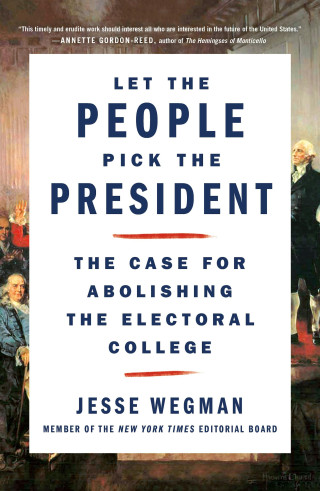On September 18, 1969, the U.S. House of Representatives voted by an overwhelming 338 to 70 to send a constitutional amendment to the Senate that would have dismantled the Electoral College, the indirect system by which Americans elect the president and vice president.
“It was the only time in American history that a chamber of Congress actually approved an amendment to abolish the Electoral College,” says Jesse Wegman, a member of the New York Times editorial board and author of Let the People Pick the President: The Case for Abolishing the Electoral College.
The House vote, which came in the wake of an extraordinarily close presidential election, mirrored national sentiment about scrapping an electoral system that allowed a candidate to win the presidency even while losing the popular vote. A 1968 Gallup poll found that 80 percent of Americans believed it was time to elect the nation’s highest office by direct popular vote.
Yet just a year later, the Senate bill that would have ended the Electoral College was dead in the water, filibustered by a cadre of Southern lawmakers intent on preserving the majority’s grip on electoral power in their states. Despite widespread bipartisan support for the amendment in both large and small states, the Senate came five votes shy of breaking the filibuster.
“It was a remarkable effort,” says Wegman of the late 1960s movement that came “painfully close” to killing the Electoral College. “We’ve never seen anything like it before, and I fear we may never see anything like it again.”
‘One Person, One Vote’
The Electoral College came under fire in the 1960s as part of a larger effort to win full voting rights for Black Americans, particularly in the South. While Civil Rights lawyers fought discriminatory practices like poll taxes that disproportionately barred Blacks from voting, others were challenging a lesser-known phenomenon called “malapportionment.”
Malapportionment refers to the practice—not limited to Southern states—of allotting vastly unequal numbers of residents to legislative districts in different parts of a state. In theory, the most populous districts in each state should have the most representatives in the legislature, but in practice that wasn’t the case. Starting in the 1920s, a wave of rural Blacks flooded into cities, in both the North and the South, but many states didn’t bother to update their apportionment of representatives to reflect that demographic shift.
Instead, states like Tennessee, Georgia and Alabama—but also Vermont and California—continued to allot far too few representatives to urban centers and far too many to rural areas. In Tennessee, for example, there was one representative for every 3,800 rural voters in the Eastern part of the state and one representative for every 70,000 voters in cities like Nashville and Memphis.
